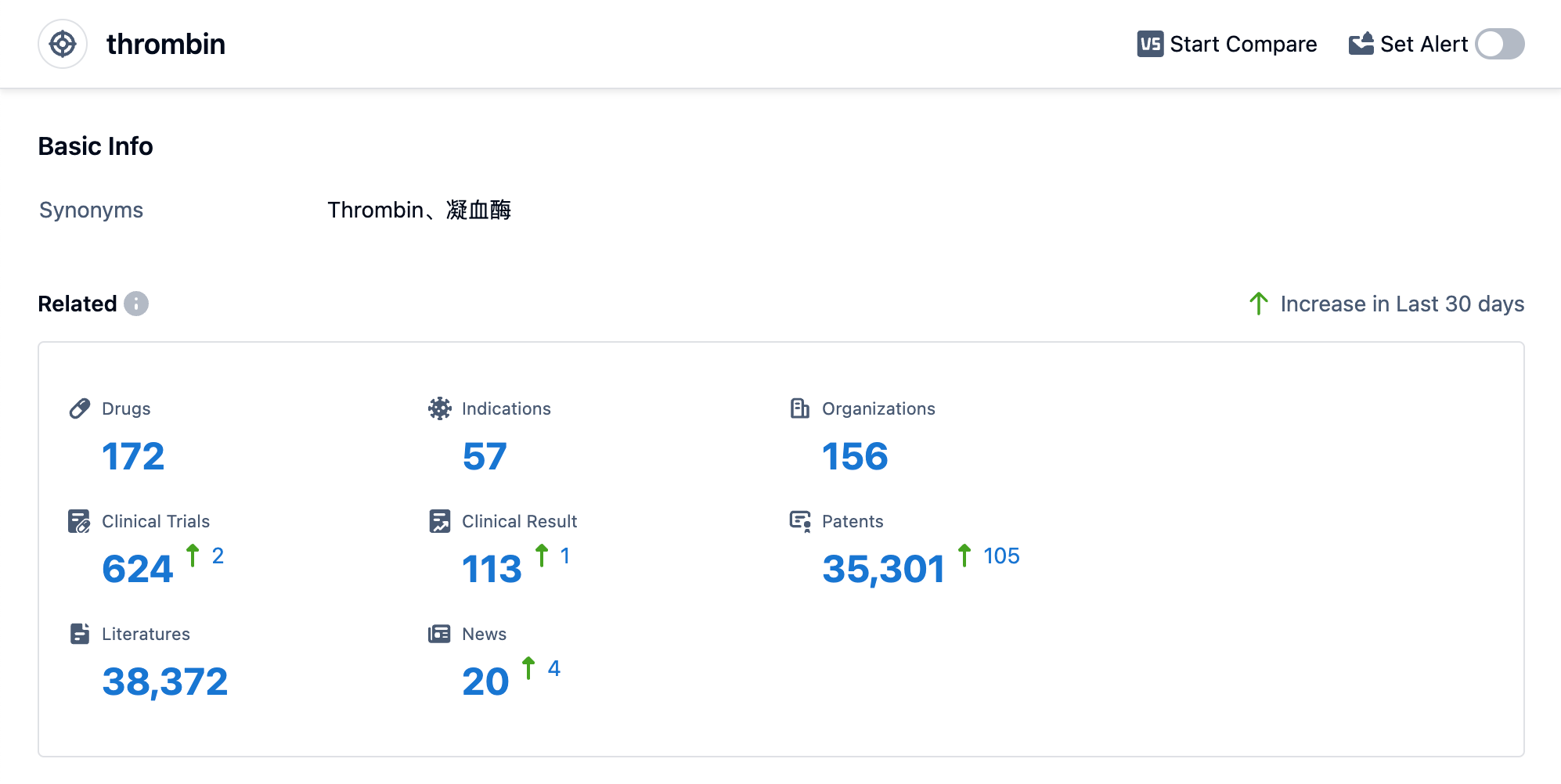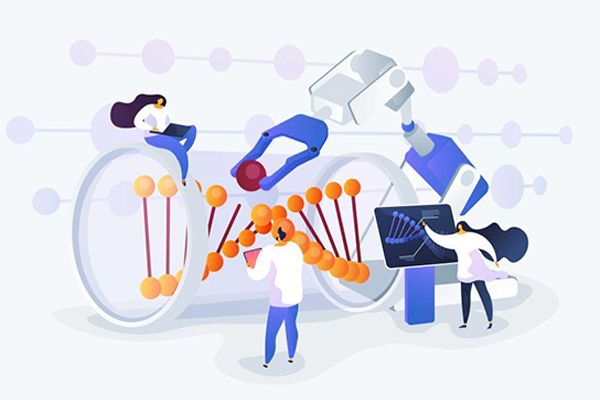Deep Scientific Insights on Argatroban's R&D Progress, Mechanism of Action, and Drug Targets
Argatroban's R&D Progress
Argatroban is a small molecule drug that targets thrombin, a key enzyme involved in blood clotting. It has been approved for use in the treatment of various diseases related to the nervous system, cardiovascular system, and hemic and lymphatic systems. The drug has shown efficacy in treating nervous system diseases, thromboangiitis obliterans, heparin-induced thrombocytopenia and thrombosis syndrome, and thrombosis.
Argatroban was developed by Mitsubishi Tanabe Pharma Corp., a pharmaceutical company known for its expertise in the field of biomedicine. The drug has successfully completed the highest phase of clinical trials and has received approval for use in globally.
The first approval of Argatroban took place in the United States in June 2000, marking a significant milestone for the drug and its manufacturer. Since then, it has gained recognition for its therapeutic benefits and has been widely used in the medical community.
👇Please click on the image below to directly access the latest data (R&D Status | Core Patent | Clinical Trial | Approval status in Global countries) of this drug.
The drug's mechanism of action involves inhibiting thrombin, which plays a crucial role in the formation of blood clots. By targeting thrombin, Argatroban helps prevent the formation of clots and reduces the risk of associated complications.
The therapeutic areas in which Argatroban is indicated reflect its potential to address a range of diseases affecting the nervous system, cardiovascular system, and hemic and lymphatic systems. This versatility makes it a valuable option for healthcare professionals treating patients with conditions such as stroke, deep vein thrombosis, and other thrombotic disorders.
Mechanism of Action for Argatroban: Thrombin inhibitor
A thrombin inhibitor refers to a type of medication or substance that inhibits the activity of thrombin, which is an enzyme involved in blood clotting. Thrombin plays a crucial role in the coagulation cascade, where it converts fibrinogen into fibrin, leading to the formation of blood clots. By inhibiting thrombin, these inhibitors help prevent or reduce the formation of blood clots in various medical conditions.
From a biomedical perspective, thrombin inhibitors are commonly used in the treatment and prevention of thromboembolic disorders, such as deep vein thrombosis (DVT), pulmonary embolism, and stroke. They are also utilized during certain medical procedures, such as cardiac surgeries or angioplasty, to prevent clot formation.
Thrombin inhibitors can be classified into different types based on their mechanism of action. Some examples include direct thrombin inhibitors, which directly bind to thrombin and inhibit its activity, and indirect thrombin inhibitors, which interfere with other factors involved in the coagulation cascade to indirectly inhibit thrombin. Common examples of thrombin inhibitors include heparin, warfarin, dabigatran, and rivaroxaban.
It is important to note that the use of thrombin inhibitors requires careful monitoring and dosing adjustments, as they can increase the risk of bleeding. Therefore, these medications are typically prescribed and managed by healthcare professionals with expertise in anticoagulation therapy.
Drug Target R&D Trends for Argatroban
The drug target of Argatroban is thrombin. Thrombin is a key enzyme involved in the blood coagulation process. It plays a crucial role in the formation of blood clots, which are essential for wound healing but can also lead to serious health conditions such as thrombosis and hemorrhage.
According to PatSnap Synapse, as of 30 Aug 2023, there are a total of 172 thrombin drugs worldwide, from 156 organizations, covering 57 indications, and conducting 624 clinical trials.
👇Please click on the picture link below for free registration or login directly if you have freemium accounts, you can browse the latest research progress on drugs , indications, organizations, clinical trials, clinical results, and drug patents related to this target.
According to the below image captured from Patsnap Synapse on 30 Aug 2023, The analysis of drug types targeting thrombin indicates that non-recombinant coagulation factors have the highest number of approved drugs (16). Small molecule drugs rank second with 3 approved drugs and 97 inactive drugs, suggesting intense competition in this category. Blood components, enzymes, chemical drugs, synthetic peptides, monoclonal antibodies, oligonucleotides, recombinant coagulation factors, and other drug types are also being developed for targeting thrombin.
Conclusion
Overall, Argatroban has proven to be a successful small-molecule drug that effectively targets thrombin and has received approval for use in multiple countries. Its approval in the United States in 2000 marked a significant milestone for the drug and its manufacturer, Mitsubishi Tanabe Pharma Corp. With its broad therapeutic areas and proven efficacy, Argatroban continues to be an important treatment option for various diseases related to blood clotting and the nervous, cardiovascular, and hemic and lymphatic systems.







